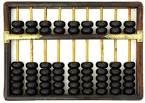MEMORY
Memory is the part of the computer that holds data and instructions for
processing. It stores program and instructions or data for only as long as the
program they pertain to is in operation.
TYPES OF MEMORY
(a) PRIMARY MEMORY: This is the memory that can
be directly accessed by the CPU which constantly interact with it, retrieves
data stored therein, goes through instructions and execute them as per the
requirement. All the information, data and application are loaded there in
uniform manner. Example is RAM (Random Access Memory) which is volatile (temporary)
but fast form of memory.
Apart from the main large capacity RAM, there
are two subs – layers of the primary memory.
(i)
Processor
registers within the processor, which are one of the fastest forms of data
storage
contain a word of data (usually 32 or 64 bits).
(ii)
Processor
cache, which is meant for enhancing the performance of the computer. It links
the
fast register to slower main memory. Cache memory loads the duplicated
information that is
used most actively. It is much faster than the main memory but
relatively can store limited
data.
USES OF PRIMARY MEMORY
The primary storage unit is used for the following activities:
(i)
For
input and output operations.
(ii)
For
manipulation of text and calculation operations.
(iii)
For
logical or comparison operations.
(iv)
For
storage and retrieval operations.
EXAMPLES OF PRIMARY MEMORY
(i)
RAM
chip provides volatile storage, but as long as it is supplied with power, it
needs no special regenerator circuits to retain the stored data.
(ii)
ROM
chip retains the stored data when the power supply is cut. So, unlike RAM
chips, ROM chips are not volatile. ROM chip only read and it does not accept
instruction from the users.
Types of ROM
(a) Programmable Read Only Memory (PROM): It
allows a chip to be programmed by the user for converting critical and lengthy
operations into micro programs that are fused into a chip.
(b) Erasable Read Only Memory (EROM): It can be
erased and reprogrammed. It needs to be removed and expose to ultraviolet light
for some time before it can accept any new content.
(c) Electrical Erasable and Programmable Read
Only Memory (EEPROM): It can be
reprogrammed with special electrical pulses.
SECODARY
MEMORY
Secondary
memory or storage is the non – volatile memory that stored externally from the
computer. A secondary – storage medium is usually used for the storage of large
amount of data or for permanent or long – time storage of data or programs. It
is also used for storing backups.
Secondary
storage media can be ranked according to the following:
(i)
Retrieval
speed: This is the time it takes to locate and retrieve the stored data.
(ii)
Storage
capacity: This is the ability to store data.
(iii)
Cost per bit of capacity.
TYPES OF SECONDARY MEMORY
(i)
Magnetic
Disk: This is a Mylar or metallic platter on which electronic data are stored.
The
data are recorded as tiny invisible magnetic spots on its iron oxide
coating.
The access
time for data stored on a magnetic disk is determined by the seek time i.e. the
time required for positioning read/write head over the paper track and search
time i.e. the time required or spinning the required data under the head. Once
the data have been accessed, they are copied from the disk to the processor for
processing. The transfer rate depends on the density of the stored data and
rotational speed of the disk.
Magnetic Disk
came in two categories which are:
(a) Fixed disk or Hard disk: It is made from
materials such as aluminum instead of Mylar.
The input/output device used to transfer data to from a hard disk called
dish drive. Hard disk may be permanently installed in a drive or in form of
removable disk.
Forms of Fixed
disk or hard disk
1. Larger permanent sealed metal disk (14 –
inch) which is used in larger systems and minicomputer.
2. Larger metal disk in removable cartridges
(14 – inch) which is used in mini sized and larger systems.
3. Rigid disks permanently housed in
Winchester drives. It comes in 9, 8 and 5¼
inches size.
4. 3½ inch disks currently used in PC’s,
servers and small ones in Notebooks and other device.
(b) Floppy Disk: These disk are available in
three sizes which are:
1. 8 inch portable floppy (flexible) disk.
2. 5¼ inch portable floppy disks.
These two
diskettes are individually packaged in protective envelopes.
3. Compact floppy disk measuring less than 4
inches in diameter.
OPTICAL TECHNOLOGY STORAGE
This involves the use of laser beams i.e. highly concentrated
beams of light. It comes in form of:
(a)
Optical laser disk which could be Compact Disk
Recordable (CD – R), Compact Disk Rewriteable (CD – RW) or Digital Versatile
Disk (DVD) or flash which the data
stored in it can be read by CD – ROM drives, CD – RW drives, DVD – ROM drives
or DVD – RW drives and Flash drive respectively.
Differences between primary and secondary memory
Primary storage devices
|
Secondary storage devices
|
|
1
|
These devices are temporary.
|
These devices are permanent.
|
2
|
These devices are expensive.
|
These devices are cheaper.
|
3
|
These devices are faster, therefore expensive.
|
These devices connect via cables and are slow, therefore
cheaper.
|
4
|
These devices have less storage capacity.
|
These devices have high storage capacity.
|
5
|
These devices refer to RAM, ROM etc.
|
These devices refer to FDD, HDD etc.
|




Comments
Post a Comment